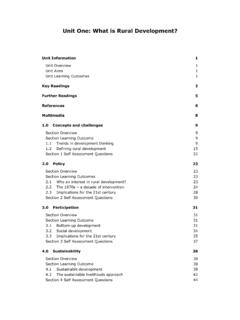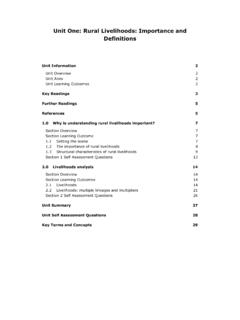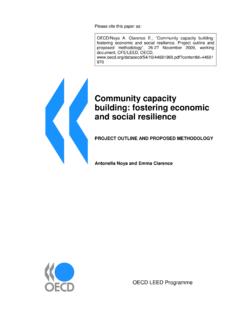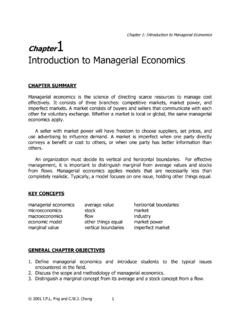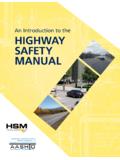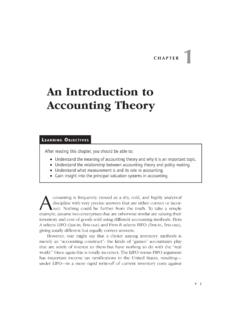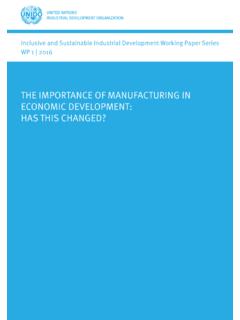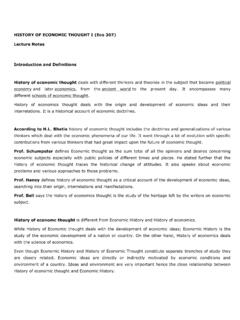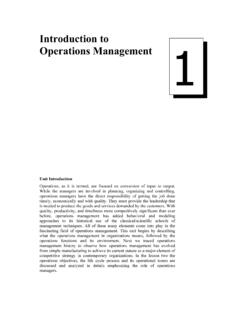Transcription of Unit 1: An Introduction To Environmental Economics and ...
1 Unit One: An Introduction to Environmental Economics and Economic Concepts Unit Information 3 Unit Overview 3 Unit Aims 3 Unit Learning Outcomes 3 Unit Interdependencies 4 Key Readings 5 Further Readings 6 References 6 Introduction 7 Section Overview 7 Section Learning Outcomes 7 Defining Economics and the environment 7 Links between the economy and the environment 8 The first two laws of thermodynamics 11 Section 1 Self Assessment Questions 13 Origins and scope of Environmental Economics 14 Section Overview 14 Section Learning Outcomes 14 Origins of Environmental Economics 14 Scope of the discipline 15 Section 2 Self Assessment Question 16 Basic economic principles 17 Section Overview 17 Section Learning Outcomes 17 Positive and normative Economics 17 Applying scientific methods and reasoning 18 Terminology and basic concepts 20 Section 3 Self Assessment Questions 23 P570 Introduction to Environmental Economics and Policy Unit 1 SOAS CeDEP 2 The neo-classical economic model 24 Section Overview 24 Section Learning Outcomes 24 Perfect competition 24 Methods of economic analysis 26 Demand 27 Supply 31 Supply and demand finding the market equilibrium 31 Pareto Optimality 34 Section 4 Self Assessment Questions 37 An Introduction to market failure and government failure 39 Market failure 39 Government failure 40 Section 5 Self Assessment Questions 42 Unit Summary 43 Unit Self Assessment Questions 44 Key Terms and Concepts 46 P570 Introduction to
2 Environmental Economics and Policy Unit 1 SOAS CeDEP 3 UNIT INFORMATION Unit Overview This unit provides an Introduction to the meaning and scope of Environmental Economics . The unit explains why the discipline is important; the linkages between the economy and the environment; the origins and development of Environmental Economics ; and the scope of the discipline. The unit then provides an overview of key economic issues and concepts that will be employed throughout the module. Unit Aims To explain how the economy and the environment are linked and the uses made of the environment by the economy. To set the discipline of Environmental Economics in context and to outline the scope of the discipline. To explain why markets fail and the resulting impact on the environment.
3 To explain basic economic concepts and principles. Unit Learning Outcomes By the end of this unit, students should: have gained a knowledge of the main interactions between the environment and the economy and the physical constraints that place limits on the interaction be familiar with the history of the discipline of Environmental Economics and what is included in the discipline have an understanding of the impact on the environment of market failure be familiar with core economic concepts and principles P570 Introduction to Environmental Economics and Policy Unit 1 SOAS CeDEP 4 UNIT INTERDEPENDENCIES Unit 2 In Unit 2 we consider in detail why markets fail or do not exist, with particular reference to the environment. The link to the current unit is that many of the basic economic principles introduced are predicated on the markets working correctly.
4 As will become apparent this is frequently not the case with respect to Environmental resources. Unit 3 In Unit 3 we consider how standards and taxes can be employed to correct forms of market failure in order to help with the efficient allocation of resources. The link with this unit is that the objective of these Environmental policies is that they are part of the possible portfolio of policy options available to rectify market failure. Unit 4 In Unit 4 we consider how subsidies and transferable permits can be used to rectify forms of market failure. Again, the link with this unit is that the policies considered are means to rectify market failure. Unit 5 In Unit 5 we consider aspects of Environmental policy implementation. The link with this unit is that ensuring that the link between economy and environment is efficient requires any policy to be implemented effectively.
5 Both the targeting of policy and its enforcement are key parts of this process in practice. Unit 6 In Unit 6 we examine issues of value as they relate to the environment. The link to this current unit is that it deepens our understanding of how the environment and natural resources interact with the economy and economic system in general. Unit 7 In Unit 7 we examine how existing markets can be used to reveal information about the value of the environment. These approaches to Environmental valuation take a very specific approach to how the economy and the environment are linked. Unit 8 In Unit 8 we explain how we can derive very broad measures of value for the environment that extend how we consider the relationship of the economy and environment developed in the current unit.
6 Unit 9 In Unit 9 we examine how measures of Environmental value can be used in practice. The methods we examine can be used to help allocate Environmental resources within the economic system. These methods provide a practical link between the economy and the environment. Unit 10 In Unit 10 we consider the meaning of sustainable development. The importance of sustainable development as an ideology-driving policy as well as a concept of resource use can be traced to the way in which researchers have considered the nature of the links between the economy and the environment. P570 Introduction to Environmental Economics and Policy Unit 1 SOAS CeDEP 5 KEY READINGS Mulhearn C, Vane HR (2012) Economics for Business, 2nd edition. Palgrave Macmillan. Chapter 1, Economics for Business, pages 1-26; Chapter 2, The Market, pages 27-69; Chapter 3, The Firm, pages 71-90; Chapter 5, Market Concentration and Power, pages 125-138; Chapter 6, Business and Government, pages 161-180.
7 These chapters or sections of chapters provide a useful Introduction to many of the basic economic concepts introduced in this unit and later in the module. The material covered in these readings is intended to give students who have limited or no exposure to economic principles additional support with the concepts and ideas being introduced in this module. Students who are confident with microeconomics from prior study may find it is not necessary to read these chapters, although they may remain a useful resource for reference on specific points or for revision. As you read this material keep in mind the ideas of public and private perspectives. Is the analysis telling us how private individuals or businesses behave? Will this explain how resources are allocated in an economy?
8 Or is the analysis taking a public policy perspective to understand how things should be done for the welfare of society. Positive and normative, scarcity, opportunity cost and allocate efficiency are key concepts that you should understand from these readings. Tietenberg T, Lewis L (2014) Environmental & Natural Resource Economics , 9th edition. Pearson. Chapter 1 provides a useful overview to many of the issues considered in the first unit. In particular, it considers the role that Economics might play in Environmental issues and how Economics can help in this context. Chapter 3 is also highly relevant as it introduces and explains how the economy and the environment are linked. Chapter 3 also develops some of the basic principles that we introduce in Unit 1 making the link with their use in the Environmental context clear.
9 Many of the ideas introduced in these chapters will be developed in more detail as we go through the module. P570 Introduction to Environmental Economics and Policy Unit 1 SOAS CeDEP 6 FURTHER READINGS Common M, Stagl S (2005) Ecological Economics . An Introduction . Cambridge University Press. Fullerton D, Stavins N (1998) How economists see the environment. Nature 395 433 434. REFERENCES Common M, Stagl S (2005) Ecological Economics . An Introduction . Cambridge University Press. Hanley N, Shogren JF, White B (2007) Environmental Economics in Theory and Practice, 2nd edition. Palgrave Macmillan. Stern N (2007) The Economics of Climate Change: The Stern Review. Cambridge University Press, Cambridge. P570 Introduction to Environmental Economics and Policy Unit 1 SOAS CeDEP 7 Introduction Section Overview In this section we begin by outlining the field of Economics , Environmental Economics , and the role of this module within Environmental Economics .
10 Specifically we develop a conceptual model of the relationship between the economy and the environment that places in context many of the activities undertaken by Environmental economists, in particular, Environmental policy design and implementation. The model we develop draws attention to some of the key relationships between the economy and the environment and the varying importance attached to these relationships by the Environmental Economics profession. Section Learning Outcomes By the end of this section, students should: understand the complexity of the interaction of economy and environment understand the extent to which economic activity can use the environment before resource sustainability becomes an issue Defining Economics and the environment Our starting point is to place this module within the field of Environmental Economics .






